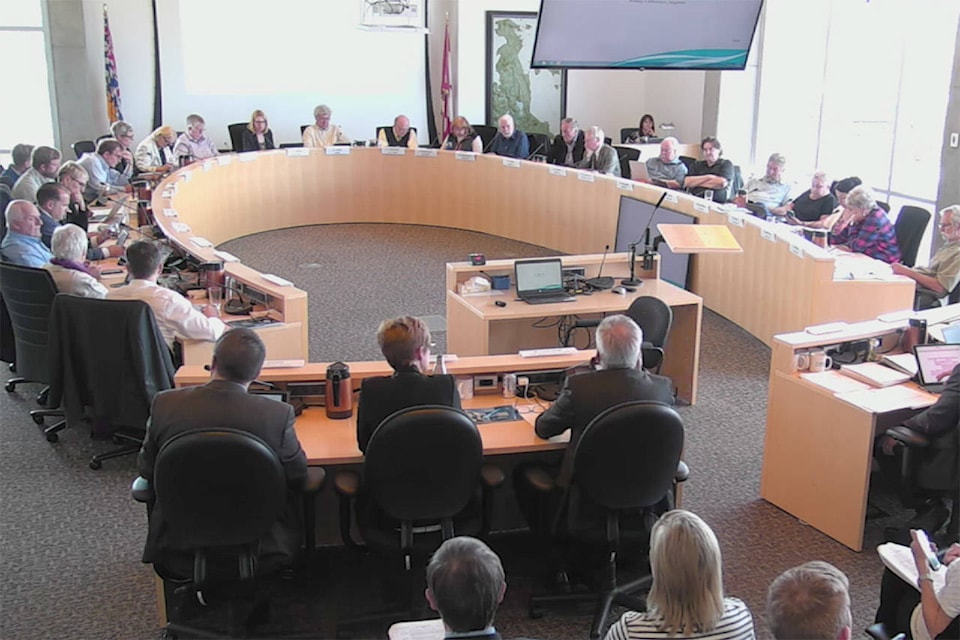Capital Regional District board members voted last week to push forward with a raise for CRD executive staff members.
This means CRD staff, some making as much as $268,000 per year, can expect as much as a 2.67 per cent increase to their salary. This jump applies to just under 10 per cent of CRD staff, and pertains to members exempt from the CRD unions. The 2.67 per cent increase is the average increase across different positions, so some may get more and some may get less.
The decision came after board members addressed an “exempt compensation policy” designed to keep wages competitive compared to other areas, with a focus on retaining staff. The policy was established in 2006, and asks a consultant to take a look at 11 similar municipalities every three to five years, and make a recommendation about wage increases to keep them in the median range, with a total increase cap of three per cent.
The last time this was conducted was 2014, with a resulting 2.15 per cent increase.
Several board members saw flaws in this system, and voted against following the recommended increase.
“The gap between our front line workers and staff, and also tax payers and managers is too high,” said CRD director Ben Isitt. “I think it’s wrong.”
“We have a sharp escalation in compensation for exempt staff,” he added. “The government is constantly pushing ceilings higher and higher… until you’re totally out of whack with what you’re paying the front line employees and staff.”
He also noted the comfortable lifestyle that Victoria and the surrounding area offers should be considered as one of the factors other than compensation that would drive people to work for the organization.
Director Richard Atwell was also against it, saying the policy didn’t look into the cost of living in each respective area, and that a person’s workload should be considered when gauging how much of a raise increase they should get.
Director John Ranns broke down the numbers and saw too large a disparity between different staff levels.
“The process we’re using is skewing the differences between the pay bands,” Ranns said. “Top pay bands are separating themselves from the lower pay bands… the problem is exacerbated every year.”
Ranns pointed out that between 2006 and 2018 the pay increase for the lowest pay band, starting around $60,000 per year, has been $6,398. The pay increase for the top pay band over the same amount of time was $53,731, nearly nine times as much.
“That’s the problem right there,” Ranns said. “Every time we get a percentage increase, top brackets go up significantly and bottom brackets don’t.”
Director Colin Plant expressed mild concern about moving the motion forward, but ultimately voted in favour of it.
“It’s never something that we like to do when we see such significant cost increases,” Plant said. “But our job as governors is to follow policy, and if we don’t like the policy, we should go change the policy.”
Director Lisa Helps agreed with Plant, and also noted that higher wages worked with a “get what you pay for” ideology. She added that sometimes people at the top of the chain also typically have “10 to 15 times more responsibility” than those at the bottom.
Helps put forward a motion to address changes to the policy in the future which included looking at cost of living, increasing responsibilities to match the wage, including benefits and reviewing comparative cities across the province.
Director Finall and Director Hamilton also voted against the recommendation, but it ultimately passed.
At this point, no date has been set for the motion to review the policy.
